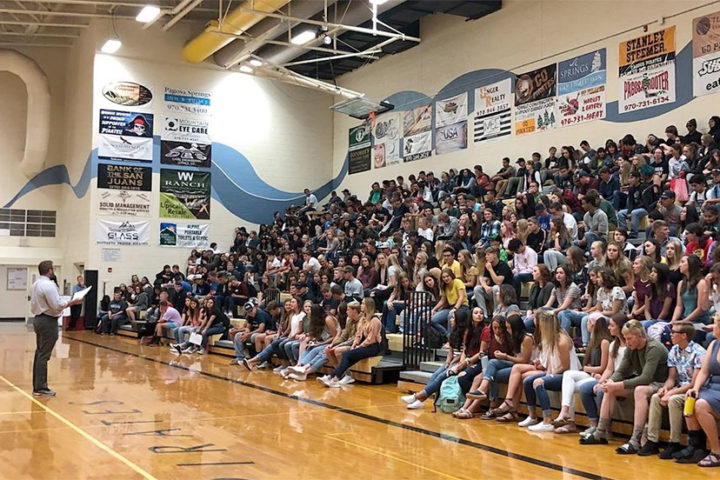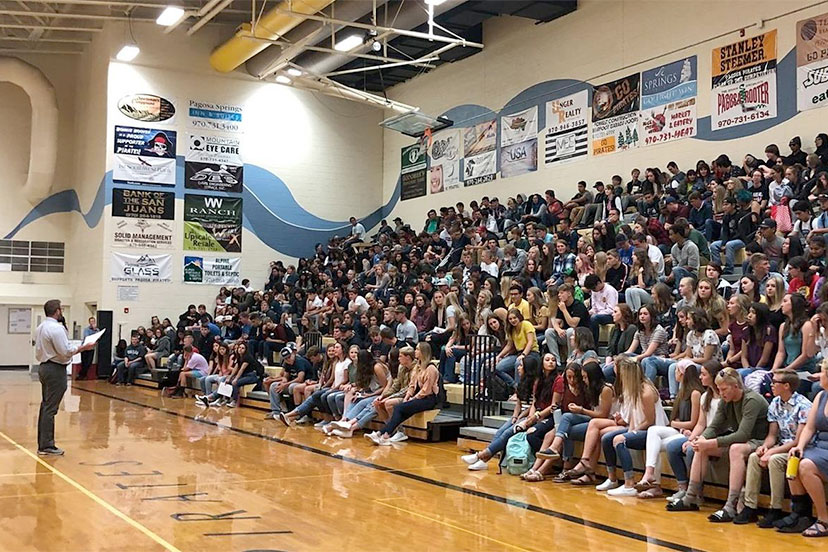Furthermore, money can only do ultimate harm where it destroys the conditions needed for ultimate success, On the other hand, by helping to supply the requirements needed, money can help build inherent success in cities. Indeed, it is indispensable…
— from ‘The Death and Life of Great American Cities’, by Jane Jacobs, 1961.
Pagosa Springs has a few things going for it. We rarely have hurricanes or tornadoes. The community did suffer a nasty flood in 1911, but with recent news reports about a 20-year drought and claims of ongoing climate change, that may be, as they say, in the past.
In this editorial series, I’ve been making reference to Jane Jacobs’ well-respected (and controversial) book on city planning, briefly quoted above. Yes, money can help build inherent success in a city like New York City — where Ms. Jacobs lived in 1961 — and most of us probably assume that money is “indispensable” for building inherent success in a small town like Pagosa Springs, as well.
There is a caveat, of course.
Money can do harm, where it destroys the conditions needed for ultimate success.
In her book, Ms. Jacobs consistently held up, as her central thesis, the idea that a city neighborhood cannot be ultimately successful without the right mix of people. Not that there was a “right mix” — a magic recipe that guaranteed success — like, 5% Italians and 3% Jews and 9% Blacks, etc. — or some mix of building uses, like 25% residential homes and 25% offices and 10% churches, etc.
The “right mix” in Ms. Jacobs’ successful neighborhood would be a unique mix for each neighborhood. Her careful observations of attractive New York City neighborhoods, comparing them to slum neighborhoods, suggested that “density” alone was not a magic bullet, but that a lively, safe neighborhood could not evolve unless there were a sufficient number of people populating the streets and parks and stores and restaurants — but also, that the people naturally had to be a diverse mix. Too many impoverished people was a recipe for ultimate failure; so was too many rich people.
Her chapter on the use of money called out three main sources of financing for neighborhood “change”: banks and other lending institutions; local, state, and federal governments; and, in New York in 1961, financing that she referred this way:
“The third kind of money comes from a shadow world of investment, an underworld of cash and credit, so to speak. Where the money comes from ultimately, and by what avenues it finds its way, is concealed and devious. This money is lent at rates that start at about 10 percent and ranging as high as the market will bear, apparently in some cases as high as 80 percent…”
I’ve been living in Pagosa Springs since 1993, and although I’m not terribly familiar with the pathways that money makes in our community, I’ve never heard of an “underworld of cash and credit” circulating in Pagosa to fund construction projects.
I’m fairly familiar with the other two sources of construction financing: commercial lenders, and government.
But before getting into a discussion about Pagosa’s cash and credit universe, a word about diversity — not in a big city, but in a mountain resort town in Colorado.
Back in 1993, Clarissa and I arrived in this small town with our three kids, we belonged to what you might call the “working class”. Or maybe, the “lower middle class”. But we had sold some real estate in Alaska and, even though we didn’t yet have jobs and hadn’t yet started a business, we were able to qualify for a loan at Rio Grande Savings, to buy a funky but reasonably-priced two-bedroom house on Lewis Street and spend the first year fixing it up. (We were not afraid to use the word “funky” to describe our newly adopted community.)
The lot next door, to the west, was vacant and apparently had been vacant for many, many years. The house next door to the east was a ‘second home’, and was used only a couple of weeks per year.
Pagosa was just coming out of some hard economic times, resulting at least partly from economic disaster in Texas during the late 1980s, where oil prices had fallen precipitously from $32 a barrel down to $12 a barrel. Pagosa’s economy had suffered collateral damage, and when Clarissa and I arrived in 1993, homes prices were depressed, jobs were hard to find, and rental prices were… well, good luck even finding a place to rent.
But the local economy was bouncing back. Young families, escaping from other places, were finding Pagosa to be affordable and attractive. Within a few years, the School District was proposing a new high school, and the taxpayers were willing to fund it.

The real estate market began to heat back up, and new construction companies moved into town. New restaurants and shops opened. City Market built a ‘huge’ new store uptown. A new medical clinic was constructed. The future looked bright.
At that point, in the late 1990s, the Pagosa economy was largely dependent upon construction jobs and real estate sales — and a bit of tourism. But the picture for an even brighter future, painted for us by various community leaders, involved increased tourism. It was pretty well understood that when tourists came to town, they fell hopelessly in love with Pagosa, and then bought one of the spec homes that were sprouting up like mushrooms. And the economy thrived. Increased property taxes would no doubt allow our failing infrastructure to be repaired, eventually.
Or so we thought.
When the Town of Pagosa Springs put a proposal on the ballot, in 2005, to create a new Lodgers Tax — a tax that would allow our community leaders to promote Pagosa as an “refreshingly authentic” place to visit… or was it “authentically refreshing”?… at any rate, I was one of the voters who happily and eagerly checked the “Yes” box on the ballot.
This new tax would be paid not by us locals, but by the tourists, and would be spent on creating an ever more vibrant tourism economy. The money thus generated would bleed over into every other sector of the economy. Pagosa would grow and thrive, and our roads would finally get fixed.
What could possibly go wrong?

